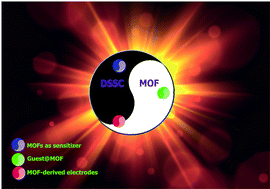Current status and future prospects of metal–organic frameworks at the interface of dye-sensitized solar cells
Abstract
The implementation of metal–organic frameworks (MOFs) as an integral part of dye-sensitized solar cells has received increasing attention over the past decade. Much effort has been devoted to improving the performance of these cells by optimizing the photosensitizer, photoanode, and counter electrode. This Frontier Article provides a snapshot of the recent advances in each of these three major directions achieved via MOF implementation.

- This article is part of the themed collection: 2020 Frontier and Perspective articles


 Please wait while we load your content...
Please wait while we load your content...